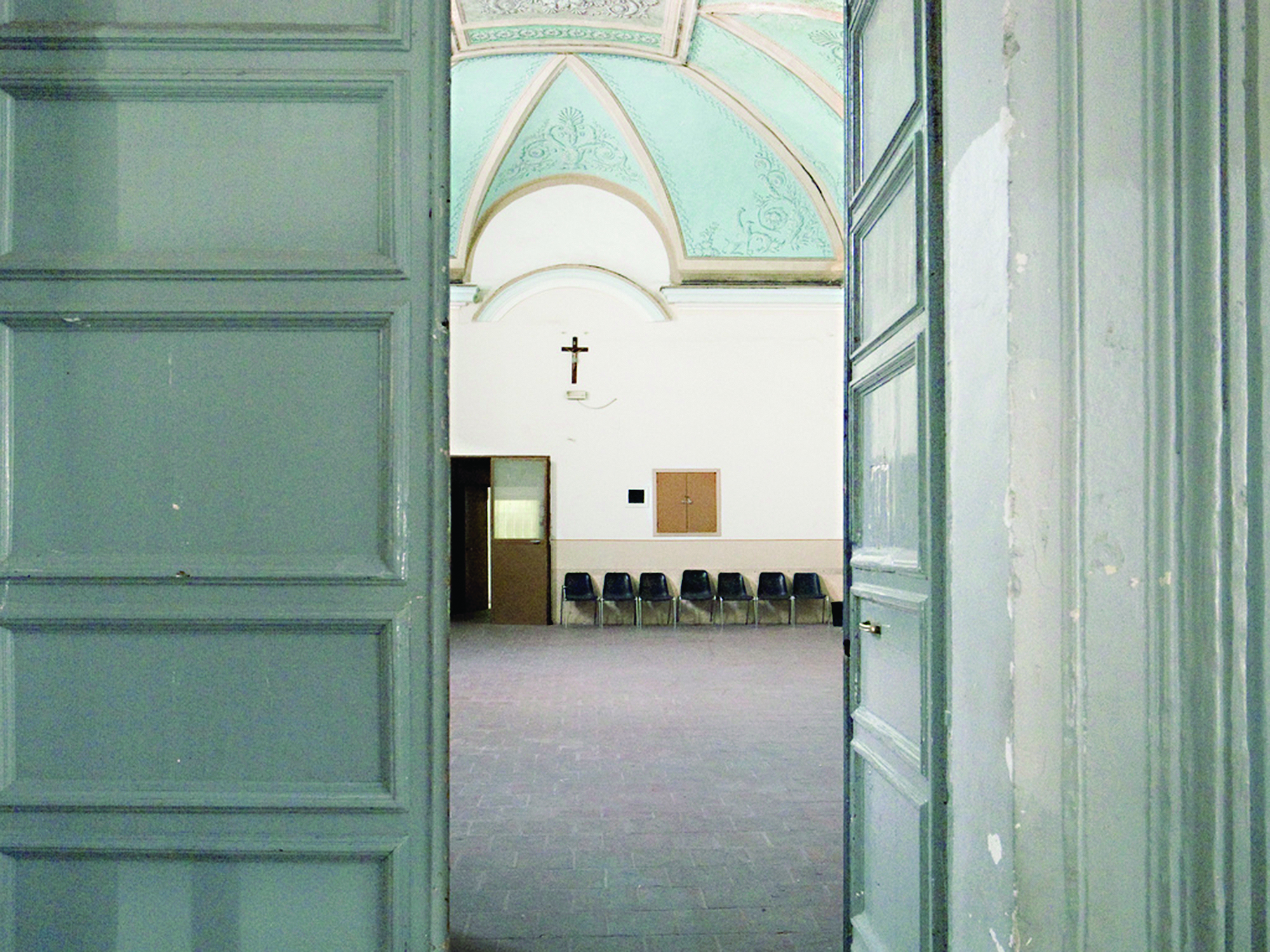
Fallen Women
CW: references to sexual assault.
The seductress, the prostitute, the murderess: these are but a few symbols which the Fallen Woman has taken throughout history – symbols which have reduced the women in question to unrelatable imitations, unreflective of lived experiences. The ways in which artists have depicted women have served to illuminate how they were viewed – as either agents of sin or virtue, but rarely both – during the Italian Renaissance. The fallen woman is a figure which arms the artist with a subject for depiction that does not require explanation. Unlike the Mona Lisa, for example, it is not the way in which she has been depicted which makes her the subject of controversy – this is provided by the symbolism and title of the painting which identifies the figure in question. It is all too easy to view depictions of women and assume we know what we are looking at; that their existence is superficial, and represents a singular moral message; that women can be categorised as gracious or fallen, but not anything in between. Yet this serves to mask the complexity of their realities; biblical women in Renaissance art were often reduced to personifications of crimes or sins or temptations, rather than being represented as complex individuals with rich realities and motives. The ‘fall’ of the fallen woman was no accident – for generations, art and literature have ignored those who were complicit in these women’s crimes, placing the burden of morality on female characters, forcing women to fall to suit their own agendas.
One of the youngest women to ‘fall’ was Salome; according to the gospel of Matthew, on King Herod’s birthday, his stepdaughter, Salome, danced for him; he was so taken with her that he promised her any gift she wanted. Her mother, jealous of John the Baptist’s influence over the King, told her to ask for his head. Though saddened by the girl’s request, Herod – ever a man of his word – granted her wish. Her position of subservience was manipulated first by Herod when he asked her to dance for him knowing she could not refuse, and again by her mother when she asked for John’s head, coercing her into undermining Christianity. Her lack of agency turned a virgin – an innocent, juvenile girl – into a whore. This exploitation has influenced the ways in which painters chose to depict her, oscillating between villainising and victimising Salome – but she has not often been represented as both simultaneously. In the age of Humanism, some – usually in private – dared to raise questions about the morality of depicting Salome as a seductress although she was stripped of her agency. Yet in compliance with the established Church’s view, which greatly shaped and sponsored art across the era, the complexities of her reality were subdued and reduced in order to increase her effectiveness as an artistic symbol.
Luini painted two portraits of Salome; in the former, there is some semblance of satisfaction in her expression – she is calculating, content in having driven Herod to commit a horrendous crime by seducing him. She represents a belief in the inherent evil and cunning of women; she is aware of her charm and thus she is responsible for the crime. The burden is placed on Salome for seducing Herod, rather than on Herod for being seduced – worst of all, by his wife’s young daughter. The fable is a cautionary tale of sexual sin. It highlights the importance of purity and propriety by forcing Salome to bear the burden of her beauty – as opposed to expecting Herod to control his sexual attraction to a girl in her early teens. It is worth mentioning that Luini’s first Salome was painted for a commission; it is often the case with respect to commissioned works that the artist’s vision is marred by the need to create a painting which is both aesthetically and morally pleasing to the buyer. This painting perpetuates the notion that a woman’s sexuality was dangerous, a medieval notion which continued to be popular during the Renaissance as the result of archetypal Christian depictions of women gaining further representation in art and literature.
In his second depiction of Salome, however, Luini paints a different portrait. This Salome hangs her head in shame; she holds the platter on which John’s head is being placed away from her body, averse to touching the severed head. The artist treats Salome with greater compassion; in the subtleties of her expression, it is possible to see that Salome is both seductress and sinner, but also innocent and led astray. The latter painting offered Luini the opportunity to engage with Salome more fully. The symbolism of the painting – Salome as the pinnacle of seduction and malice – was subdued by the engagement with the figure in question. Without the use of clear symbolism, it no longer represented the message which appealed to the patron. Luini paints a sexually attractive woman who is naive, defying the need to categorise her within the binary of evil versus innocent. In the first portrait, Luini is fulfilling his patron’s request by painting a portrait of a cruel seductress, complying with the binary ideals of what women could be – either virgins or whores – and limiting his own expression in the process.
Whilst Salome fell from grace, Mary Magdalene rose to it; according to the four canonical gospels, she was one of the earliest and most devoted followers of Christ – but for centuries, she was believed to be a prostitute – although there is no solid scriptural evidence to support this assumption. Nonetheless, it is still difficult to separate her image from that which was created by hundreds of years of allusions – and more often, explicit references – to her past, both in religious canon and art. Perhaps this is because there is something particularly inviting about the fictitious figure of the reformed prostitute – especially during a period when women were defined as virgins or whores. Although many intellectuals and artists of the Renaissance period believed that men could live moral lives without subscribing to Chrisitian ideals and morality, this belief did not often extend to women. Thus, narratives did not engage with the complexity of women’s characters, but rather used them as one dimensional devices in stories which were fundamentally about men and their pursuit of morality – both within a Humanistic and more often a Christian context. Mary Magdalene’s narrative was essentially about her relationship with Christ; this is precisely why so little was written about her life before Him.
Domenichino painted Mary Magdalene after Christ – she is dressed modestly and sits in a pool of light, which makes it appear as though she has a halo. There is no evidence in the painting that the character in question was ever suspected to be a prostitute – the woman Mary Magdalene was before she was saved is entirely irrelevant in the artist’s view, for contemporary standards dictated that he could not possibly be a sexual creature and a saint at the same time – at least not if he wished his painting to be bought or receive any acclaim. This limited depiction was painted during the counter-reformation, a period of increased
traditionalism in the Church which dictated that painting had to depict saints ‘correctly’ – as patrons of purity. Yet most scholars would agree that Mary Magdalene’s past is important to understand the woman she became; she was not simply a fallen woman, but one ascending, constantly reforming herself and coming closer to Christ. Nonetheless, this narrative did not fit the one perpetuated by the Church and increasingly established patriarchal structures of the counter-reformation; notions about the singularity of women’s roles were enhanced by the need to retreat to traditional values, supposedly to protect the faith. From the conception of original sin, it was seductive charm and the sexuality of a woman which led to the downfall of man, thus, women were readily defined as virgins or whores. This led to the aversion to female sexuality within the Church perpetuated by the notion that women’s sexuality caused sin. The result is a painting of Mary Magdalene stripped of her complexities and past – she was not painted in order to act as a representation of herself, but rather used as a device, a singular-saintly-character propagating the glory of God’s salvation.
Caravaggio, who always had a fairly contentious relationship with the Church establishment, paints a far more human Mary Magdalene; her eyes half-closed, lips parted in pleasure. This Mary Magdalen, in her chastity, ironically appears to be experiencing a sensation reminiscent of her pre-salvation past. Caravaggio is willing to acknowledge Mary Magdalene’s sexuality: perhaps because he himself was hardly the pinnacle of Christian morality, being known for his violent nature and indulgent lifestyle. The depiction challenges expectations, as most often women were viewed as either sexual or pure, but not both – it is certainly rare for a woman to be receiving apparently sexual pleasure from an act of purity. Yet Caravaggio did not concern himself with the morality of the depiction, but rather the naturalism of the portrayal – this says much about the ways in which Caravaggio viewed Mary Magdalene: as an innately sexual being. Although she is born again in the eyes of God, she maintains her sexual appeal – she is the exception, a venereal virgin. It is evident that, though Mary Magdalen renounced her past, it did not renounce her; she would be immortalised as the prostitute who won the affections of Christ.
Though perhaps lesser known than Salome or Mary Magdalene, Judith was the subject of a great number of paintings from the Renaissance period. According to the Book of Deuteronomy, Judith was tasked by God to seduce Holofernes and behead him, preventing him from destroying her city, Bethulia. One of the most famous depictions of Judith beheading Holofernes is that painted by Artemisia Gentilischi. There is much speculation that Gentlischi painted herself beheading the man who raped her. Yet as compelling as this theory may be, it is worth considering that if she was exacting her revenge through art, perhaps this is not the form it would have taken; according to the transcripts of her trial, her main concern following her assault was how her lack of ‘virginity’ would impact her status. To be viewed as pure in an age when women’s sexuality was highly regulated to ensure chastity and thus the legitimacy of heirs once a woman was married was important to maintaining a position in high society. This explains why her trauma took a very different shape to what we might expect today, and there is no reason to assume the case would not be the same for her vindication.
Nonetheless, this does not mean Gentlischi’s Judith is not powerful; or that Gentlischi was not trying to achieve some form of catharsis through this painting. The narrative built around Gentilischi attempting to immortalise her vindication is convincing, especially considering that she was evidently influenced by the concept of virginal purity and its importance to a woman’s reputation both intellectually and practically. Her relationship with womanhood in this period was dominated by cultural constraints, and the pressure to be perceived as gracious rather than fallen. This view, prevalent in Renaissance society, can be seen in Gentlischi’s art and her powerful portrayal of women doing God’s bidding, hence receiving His Grace. Although the number of women, specifically biblical figures, depicted in art in this period increased, the complexities of their portrayals did not, evidencing the maintenance of medieval, Christian notions about the singularity of women’s natures.
Gentilischi offers a far more powerful depiction than her tutor, Caravaggio, who painted the same scene some years earlier. His Judith may also be bold and determined, but she is not much else; because his experience and understanding is limited, he does not succeed in depicting the emotional experience in question as vividly. It is Gentilischi’s unique perspective as a woman, and one who has experienced assault at that, which allows her to paint such vivid depictions of vindication.
Perhaps only a woman could understand the complexities and nuances of womanhood as Gentilischi did; perhaps this is why so many biblical paintings of the Renaissance, though beautiful, seem somewhat like mere caricatures of women. Judith, Salome and Mary Magdalene are vastly different from one another; their crimes, reasons and absolution vary greatly. The common factor that unites them is that they have all been used in art as plot devices, as means to define morality and immorality in relation to sex and sin. In many cases, the need to see women as one-dimensional, as the vessel for moral teachings rather than complex and fascinating individuals, influenced their portrayals in art. The ways in which they have been forced to bear the full burden of their crimes have made it easier to reduce them to immorality, rather than acknowledge the factors which influenced them. Though rarely, it is possible to see that attempts were made to engage more fully with their narratives; the fallen woman did not fall – she was pushed.
Words By Eleni-Maria Athanasiou. Art by Emma Rath.







